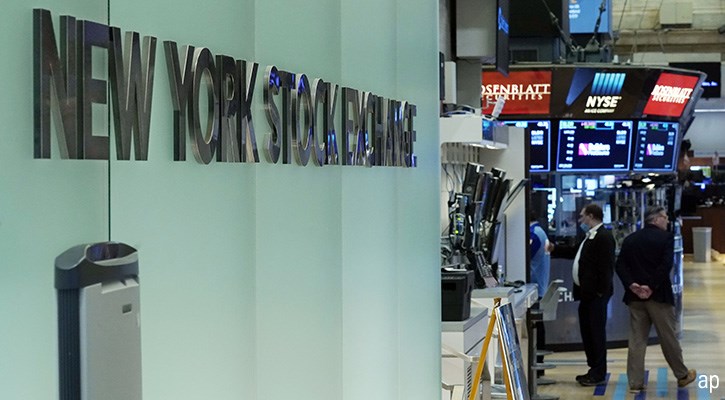
These are confusing times for investors. As the global economy reopened after the Covid-19 shock, it rocketed higher, fuelled by pent-up consumer spending, and businesses with new visibility to hire and invest. More recently, this momentum has started to ebb, suggesting the restart may be over. What happens next?
The answer is important for the shape of investor portfolios. If the restart is drawing to a close, it will no longer support those cyclical companies that led stock markets in the early part of 2021. If inflationary pressures are easing, it may be that the giddy valuations of fast-growing areas such as technology and green energy can be justified.
The pace of recovery is also likely to influence the Federal Reserve’s timetable for tapering quantitative easing. At the recent Jackson Hole meeting, Fed chair Jerome Powell made it clear that the US economy has now met the test of “substantial further progress” toward the Fed’s inflation objective and that tapering was likely to happen before the end of the year. However, the speed and magnitude of tapering will have implications for the dollar, government bond markets and dollar-influenced emerging markets. It may also create volatility across equity markets.
The Trouble With Data
While the world remains firmly in “recovery” territory, the impressive year-on-year growth seen in the first quarter has slowed. August saw a batch of less-than-encouraging data in Europe, with the overall eurozone composite PMI falling to a two-month low of 51.6 in August from 54.9 in July. US jobs growth has slowed as the Delta variant has curbed recovery in hard-hit parts of the country.
David Roberts, head of fixed income at Liontrust, cautions about putting too much faith in these data points: “There are bottlenecks in the system. This is particularly true for European PMIs, which are influenced by the auto market, where chip shortages are causing problems.” He says many of the other measures they look at – growth, inflation, unemployment – are also difficult to interpret: “Do we believe UK earnings are growing at 6-7%? No. It’s just that many lower paid workers have been laid off, so we’re left with a higher average wage. All the data points are a bit confused, so investors shouldn’t be too worried they’re rolling over.”
The difficulty of interpreting conventional data has prompted him to look at different indicators, such as the Baltic DryFreight index, which gives a clear indication of trade volumes. Commodity demand may also give an indication of the relative strength of economic recovery. These are suggesting a small dip, but only over the very short-term.
Roberts believes bond yields are likely to remain low in almost all circumstances: “Governments have spent so much money that central banks need to keep rates low to fund the debt and ensure stability of the financial system.” That said, he can see central bank dominance and control pulling back in 2022. He adds: “As investors we need to work out whether we are the peak of central bank power. If it gets scaled back, do we go back to looking at markets the way we used to pre-2008? Where we’re left to get on with it, where there is more volatility, we get paid for making good decisions, good companies prosper and bad companies fail.”
Stock by Stock Approach
This uncertainty means that a binary “value versus growth” choice is unlikely to be the right option. David Miller, executive director at Quilter Cheviot, says that investors need to be far more granular in their investment selection, particularly given problems in supply chains: “It is about looking at individual companies and asking whether they can they do business. Are they having to pay more to get staff? Can they put their prices up? Can they find a lorry driver to deliver their goods? The challenge is growth and it will be very much stock by stock.”
There are still the obvious winners – technology’s growth seems assured, as do those companies benefiting from the energy transition. If interest rates stay low, the valuations for these high growth companies don’t look as stretched, even if they see some short term hits from Fed tapering. However, Miller believes there are areas that have been overlooked: “Healthcare should have received more attention.” He believes governments will come under pressure to resolve the limitations of healthcare systems exposed by the pandemic. This sits alongside the consumer healthcare revolution, where individuals are taking charge of their own wellbeing.
He adds: “We are also looking at what is going to happen to high street and offices as the work environment changes. Construction should be in a good place because there is a huge amount of building to be done over the next decade, but in the short term it has a problem with supply chains.”
A Nuanced Picture
Bill Dinning, chief investment officer at Waverton Investment Management, says portfolio construction has been very difficult in recent months. “I’m sceptical that it is possible to call a clear pattern. I don’t think it is growth versus value, but a choice between growth and defensives. It’s a more nuanced picture than it has been and we are not tilting one way or the other.”
Edward Allen, private clients investment director at Tyndall Investment Management agrees: “After some strong moves in the market, it is important for investors not to have all of their eggs in one basket. By all means hold growth, but also be mindful of the reflation trade. Banks, oil and resources companies are all throwing off cash. This is not a time to be brave.”




























